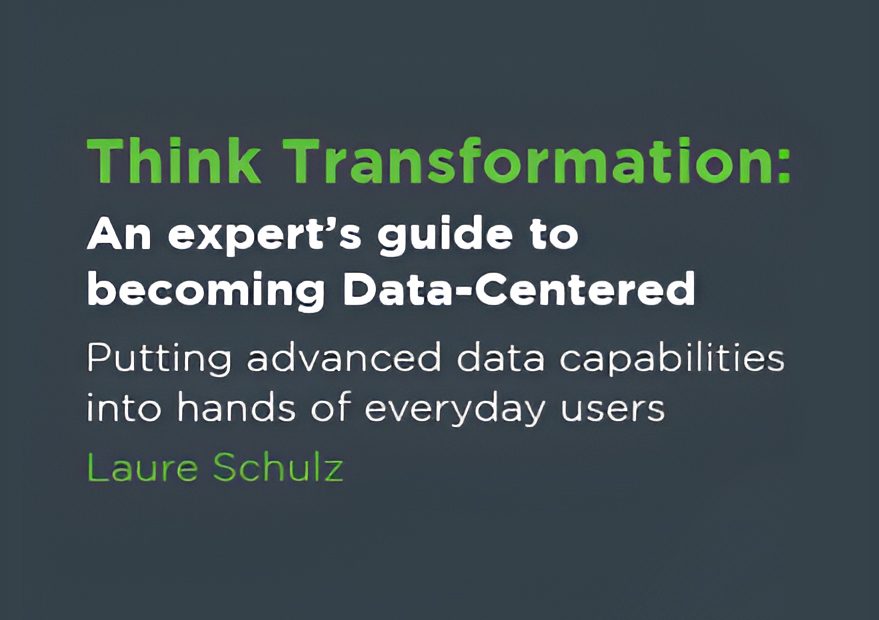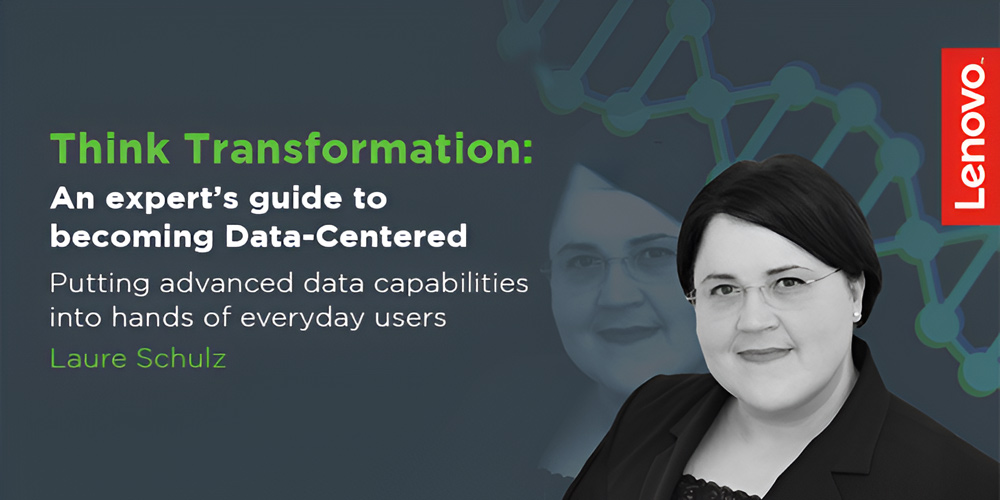

Data scientists, by nature of their discipline, tend to look at problems differently. From the mundane everyday challenges through to the existential risks that face the future of humanity, they break the problem down to its most granular level and ask, ‘how can we solve this?’ That’s the power of data. We start with a problem; we build a hypothesis and we let the data guide us towards the solution. With massive advances in the supercomputing space, including continual developments in AI; exascale and quantum computing, the scale, quality, and granularity of the data we use is only improving. And improving fast.
These advanced data capabilities alone, however, don’t solve the problems. People do. Across the process, it takes innately human qualities to make sure we’re framing the problem properly, that we’re collecting and analyzing the right data, and we’re applying critical thinking to work out whether what we’re seeing on our screens matches with the reality.
Recognized as one of the top supercomputing hubs globally, we devote our time and resources at LRZ to helping our users tackle large and difficult problems. We give them access to advanced analysis techniques to conduct scientific research and make discoveries that further their understanding in areas like healthcare and climate change, which are vital to humanity’s survival and prosperity. Our goal is to continually push the boundaries of what’s possible in the supercomputing space and to blaze the trail for a new paradigm in data and technology.
These analysis capabilities are becoming more and more available to organizations across a vast range of sectors, sizes and use cases. The priority now is to extend their utility beyond the data scientists and to the everyday user, bringing the power of data to tackle all manner of problems.
Discovering what’s possible
As a pioneer in data science and analysis, we feel a sense of responsibility to act as role models for other organizations. We support academic institutions dealing with data from a wide variety of domain spaces, ranging from astrophysics to humanities, to computational fluid dynamics, and engineering simulations, combining large – often measured in the terabytes – and complex data sets with leading-edge software applications to gain insight.
While our users are typically mature in their grasp of data and how to use it, we seek to cater to all levels and set the standards for how other less data-native organizations can harness the opportunity that exists in big data. The reality today is that every organization needs to meet a basic threshold of comfortability in its use of data if it’s to capitalize on what’s available to them. This power doesn’t belong only to the data giants and ‘born in the cloud’ businesses of our time – smaller, smarter organizations too can realize the benefits in their operations.
The differentiator, therefore, isn’t size or sector; it’s people. It’s their people that define the problems that need to be solved, build the models, interpret the result, and derive value from the insights. And it’s people that are the ultimate beneficiaries of the organization’s progress in data maturity, from supporting their everyday tasks to addressing the bigger challenges that help maintain the organization’s ongoing competitiveness.
Facing up to the user challenge
Empowering people to operate in the data economy is no easy task. Across a variety of roles, users have a growing need to be able to draw insight from the data available to them, but not all users are at the same level. The myriad of skills required to become data competent, from compiling and scrutinizing raw data, through to operating (often complex) software to derive answers doesn’t sit in everyone’s toolset. Some users come from disciplines that are better equipped to filter and analyze data, while others may feel daunted by the prospect as it feels remote from their core competencies.
There are also dissimilarities among preferences for how they interact with data; some people are comfortable exploring dense Excel databases, some have competencies in programming languages like Python, R, and SQL and can apply their data science techniques, while other users may favour simpler, more visually-oriented ways of interpreting data. There’s no single way data should be served to suit these different preferences and use cases.
Organizations also have to be forward-looking in how they structure their data operations. Data is a fundamentally dynamic space, and the needs users have today may not be what’s needed in the months and years ahead. It’s incumbent of leaders to be fluid in how they approach data in terms of the strategies, processes, and tools they apply and avoid being ‘locked in’ to a particular approach.
Without accounting for these different factors at a strategic level, organizations cannot become user-centric in their data operations.
Putting the user first
So how can business and IT leaders enable their users to better interact with data? The answer, I believe, is to put all employees at the center of the organization’s data ecosystem. User experience, therefore, should be high on the list of priorities – the tools and processes should be intuitive and accessible, and the interfaces should abstract away the complexities that would ward off less experienced data users as much as possible.
While tempting to get drawn into the micro-detail of specific tasks and operations, it’s important to take a holistic viewpoint and consider the end-to-end user journey, from need through to completion of the task. How can this be structured to deliver a smooth, simple, and well-integrated experience? In this context, data needs to be seen as an ecosystem play – ensuring all data sources and projects are integrated through IT so that different teams can be working on separate, yet mutually-supportive projects. By enabling tools and data sets to be shared, teams can save valuable time, get to their desired result faster and more accurately, and contribute to a shared pool of knowledge that will compound with time.
Leaders also need to think about how they guard users against the risks associated with poor use of data. Data alone will not provide insight; it requires human interpretation. Without a conscious appreciation of the risks inherent in interpretation, such as maintaining high data quality, checking the reliability of data sources, and filtering bias, the outcomes can often be sub-optimal. Leaders, therefore, need to put processes in place to have control over collecting, preparing, and sense-checking how data is being used.
Think big
The opportunity that exists before us is unparalleled in human history and this opportunity is becoming increasingly available to organizations and their users. Even with the most idealistic of intent, however, positive outcomes are never guaranteed.
To offer their fullest potential – to the individual, the organization, and to society more broadly – data and technology need a human touch. When we’re making sure that our humanity is reflected and ever-present in our technological approaches, that’s when we as a society, advance. And that’s when technology genuinely enhances our livelihood and everything around us.
This requires us, now more than ever, to have a deep understanding of not only the technology that is available, how the data is held and computed, and how all of this works together, but also genuinely what the users need – what they need of the systems. More importantly, what it is they think they need, and then how does that translate into what is happening on the system.
The role of leadership in driving data transformation is therefore to take a more strategic view of their data environment and the relationships that exist within it. Thinking about the journey and the experience is a necessary first step if they are to make data open and useful to all their users.
